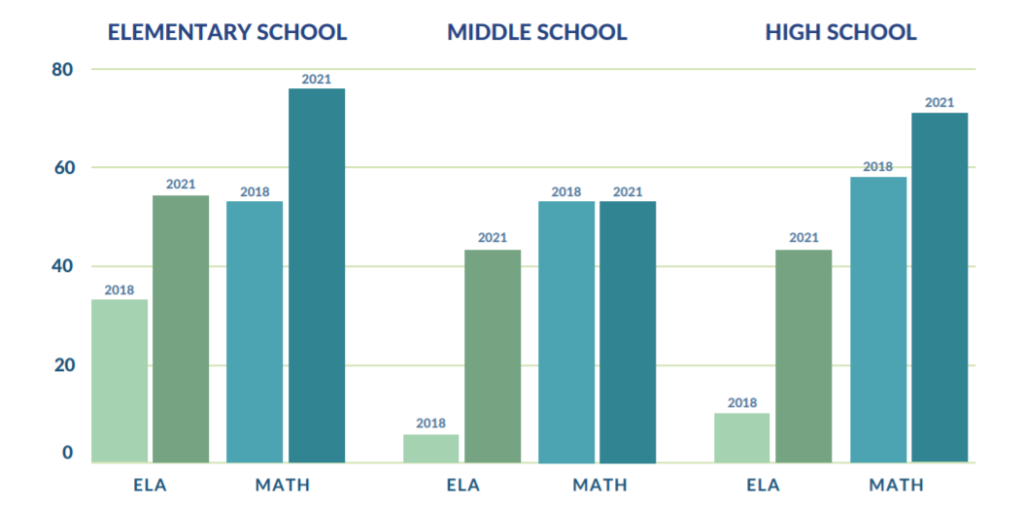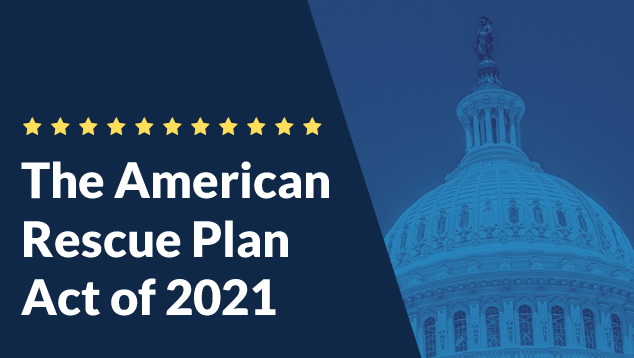-Curriculum and access to high-quality instructional materials are important drivers in student learning. Ensuring all students have access to grade-level materials is critical to their success.
-Delaware educators, in conversations facilitated by the Rodel Teacher Network, said they needed more state support on vetting and organizing online materials.
-Since then, Delaware schools made national headlines for using high-quality instructional materials and the positive impact made on educator and student success.
-A new statewide initiative aims to provide educators and school leaders with a rich library of resources and approaches to professional development for implementing and utilizing high quality instructional materials in classrooms.
![]()
Four Delaware Districts Become National Stars
Four local districts—Seaford, Cape Henlopen, Brandywine, and Red Clay—received some national kudos this summer.
Knowledge Matters, a nationwide issue campaign, is spotlighting districts across the country they consider superstars when it comes to high-quality instructional materials, specifically ones that “improve literacy, student engagement, and student achievement.”
The educator-, expert-, and science-backed movement even toured the country examining districts as they implement curricula that build students’ background knowledge as literacy skills are developed.
As covered by Kelly Carvajal-Hageman in her outstanding write-up in The 74 Million, Seaford was dead last among districts in nearly every standard measurable just six years ago. Today, the district is one of the highest achieving in Delaware as measured by English Language Arts state testing results.
How? As Carvajal-Hageman notes, Seaford started by focusing on professional development—leading to an eventual paradigm shift—a shared “Trust the process” mantra—among educators.
(Click here to learn about how Laurel School District unlocked its literacy challenges through the open-source, knowledge-rich “Bookworm” curriculum.)
As the Knowledge Matters suggests, educators have uncovered a multitude of techniques and strategies to utilize high-quality instructional materials (HQIM). Here are a few insights the Rodel team has heard from educators in the field:
- Consistency across schools and districts. As we learned during the first few weeks of COVID-19, the most valuable resources were the ones readily available online that could be shared across schools in a district.
- HQIM enable teachers to focus on scaffolding (not creating) materials. Not all online resources are created equal, and surveyed teachers were more familiar with Pinterest than with the Smarter Balanced Digital Library.
- Conversations among educators are increasingly academic focused; having a common language on materials enables understanding and growth.
- Value in standards-based grading. As noted by the Rodel Teacher Network, competency-based grading is an innovate way to encourage mastery for students.
- Standards and rubrics have created greater purpose and ownership among educators, with a shared understanding of the destination.
- Strengthens instruction and expands access so all learners receive access (and support for) to grade level material.

So, what is HQIM?
There is no “one weird trick” to guarantee delivery of a high-quality lesson to students—online or otherwise. Teacher quality is perhaps the best known among many factors that influence student progress and achievement. And, research suggests the quality of instructional materials themselves can also play a large role in student success.
Thanks to a wellspring of research on HQIM, schools, districts, and states like Delaware are working to ensure all students can access what is known as high-quality instructional materials.
HQIM are vetted, knowledge-rich resources and materials for learning that guide instruction. The Delaware Department of Education (DDOE) describes them as a “roadmap for teachers on how to plan, teach, and assess student learning.”
What qualifies as an “instructional material” can include items such as lesson plans, assignments, homework, assessments, and others in a long list of materials for learning. What makes a material high quality however is the vetting of material and alignment to content standards.
While research demonstrates the positive impact HQIM can have on students, access to HQIM is another issue. Across the country, teachers can spend hours outside of their normal workday looking for materials or even creating their own. As shown in the Materials Matter survey conducted by the Rodel Teacher Network in 2019, many teachers turn to resources on the web for instructional materials and resources that may or may not be high quality.
When given access to HQIM and the proper professional learning and development to go with it, teachers are provided with a roadmap to follow and the assurance the materials have already been vetted and are of high quality.
”Delaware Delivers” on Expanding Access to HQIM
While some schools and districts have prioritized HQIM over the years, Delaware has more recently embarked on a statewide strategy to ensure all students have access to HQIM. Over the past three years alone, DDOE took steps to scale the adoption and implementation of HQIM, focusing on professional learning and supporting schools.

Source: Delaware Department of Education (2021). Screenshot from Delaware delivers: Overview of high-quality instructional materials.
Ensuring all students have access to HQIM is important, and Delaware already has made progress. Since 2018 alone, students with access to high-quality, standards-aligned instructional materials has increased statewide.
Student Access to HQIM in Delaware, 2018-2021

Source: Delaware Department of Education (2021). Screenshot from Delaware delivers: Overview of high-quality instructional materials.
Access to HQIM in English Language Arts (ELA) has increased significantly for students across all grades between 2018 and 2021. In middle school, access to ELA HQIM increased from six percent to 43 percent. While the percentage of middle school students with access to HQIM in math stayed the same, the percentage of elementary and high school students with access increased. In elementary school, access to math HQIM went from 53 percent to 76 percent.
Additional data show that students of color and students from low-income families have increased access to high-quality instructional materials during the 2019 and 2021 window. Since 2019, Elementary school students of color with access to ELA HQIM increased from 30 percent to 55 percent. Middle school students from low-income families with access to middle school math HQIM grew from eight percent to 38 percent.
Check out the below video to learn more about local HQIM efforts, and stay tuned to DDOE’s HQIM website for any updates.




